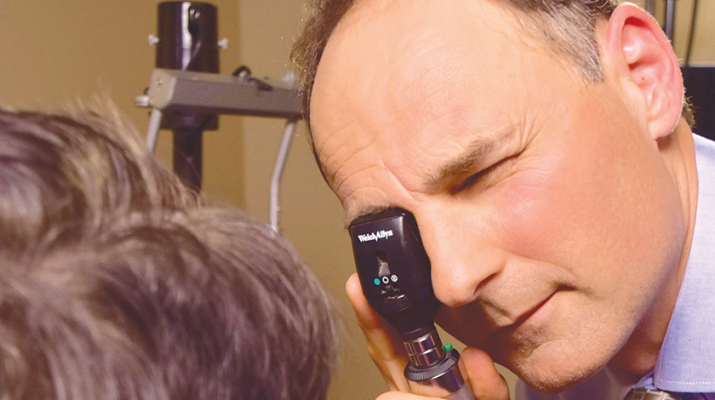Condition can start affecting people as early as 40
By Nancy Cardillo
As we age, our bodies undergo many changes, including diminished eyesight. Presbyopia — the age-related eye condition that makes it more difficult to see very close — usually begins to appear around age 40. Cataracts are also very common, often showing up when people hit their 40s or 50s; however, at that point they are typically small and won’t affect vision. As people reach their 60s, however, cataracts can begin to steal people’s vision. By age 80, more than half of all Americans either have a cataract or have had cataract surgery, according to the National Eye Institute.
What exactly is a cataract?
Simply put, a cataract is a clouding of the eye’s lens — the transparent part of the eye that helps to focus light or images on the retina — that negatively affects vision.
In a normal eye, light will pass through the lens to the light-sensitive tissue at the back of the eye known as the retina. Once light reaches the retina, it is changed into nerve signals that are sent to the brain. The clearer the lens, the sharper the image. But if a cataract is clouding the lens, the image will be blurred.
An eye’s lens is made up mostly of water and protein. As we age, the protein can clump, which clouds the lens and creates a cataract, which can grow and cloud more of the lens if not removed.
A cataract can occur in either or both eyes. Some develop slowly over the years, with minimal visual changes; others develop rapidly over a few weeks or months.
What causes a cataract?
“Cataracts usually develop as part of the normal aging process,” says David P. Montesanti, a board-certified surgeon at Eye Care & Vision Associates (ECVA), an ophthalmological practice with four offices in Western New York. “But they can also be caused by diabetes, eye injury, smoking, medications and even by prolonged unprotected exposure to the sun.”
There are some things you can do to protect your vision, such as wearing sunglasses and a hat with a visor. If you smoke, stop. Eating green, leafy vegetables, fruit and food with antioxidants can also help reduce your risk.
What are the symptoms of a cataract?
The most common symptoms of a cataract include cloudy or blurred vision; colors that seem faded; glare or light sensitivity; poor night vision; double vision or frequent prescription changes for your glasses or contacts. If you experience any of these symptoms, see your eye care professional, who can detect a cataract through a series of simple, painless tests.
How is a cataract treated?
The only real treatment for cataracts is surgical removal, one of the most common operations performed in the United States today. It also is one of the safest and most effective types of surgery. In about 90 percent of cases, people who have cataract surgery have better vision afterward. But, in about 10 percent of people, a thin membrane can form on the back of the implant. This can be removed simply and in just a few minutes with a laser. Once removed, a cataract cannot grow back.
“There have been considerable advancements in cataract surgery,” says Montesanti. “Today, most cataract surgeries are done in an outpatient setting by ultrasound disruption of the lens, called phacoemulsification, with placement of a clear acrylic or silicone lens implant, called an intraocular lens. An IOL requires no care and becomes a permanent part of your eye, improving your vision. You will not feel or see the new lens.”
What happens after the surgery?
For a few days after surgery, your doctor may ask you to use eye drops to help healing and decrease the risk of infection. You will need to wear an eye shield or eyeglasses to help protect your eye. Avoid rubbing or pressing on your eye, try not to bend from the waist to pick up objects on the floor. Do not lift any heavy objects. You can walk, climb stairs and do light household chores.
“Patients can experience itching, discharge and mild discomfort after the surgery, as well as sensitivity to light and touch,” says Montesanti. “That typically disappears after just a few days.”
In most cases, healing will be complete within four weeks and you’ll experience clear vision once again!

